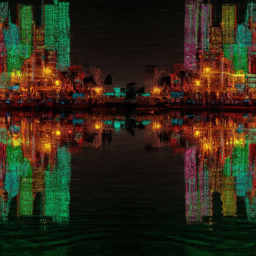Capturing Creativity: The Impact of Computational Photography on Authenticity, Control, and Trust
Introduction:

In recent years, computational photography has gained significant popularity and advances in technology have enabled smartphones to capture stunning images in low light, motion, and nighttime scenes. However, this new trend in photography raises questions about the authenticity and control exhibited by photographers. As camera manufacturers continue to embrace computational photography, it is important to examine the implications it has on the art form and the trust we place in our visual representations.
Enhancing Reality by Compromising Authenticity: The concept of computational photography revolves around using algorithms and artificial intelligence to enhance images beyond what traditional cameras can achieve. By combining multiple exposures or processing techniques, smartphones can produce visually striking images, even in challenging lighting conditions. While this technology undoubtedly offers photographers new creative possibilities, it also raises concerns about compromising authenticity.
The Loss of Control and the Distortion of Reality: One of the main issues with computational photography is the loss of control for the photographer. Rather than capturing a moment as it is, the camera’s algorithms dictate the subject and appearance of the final image. This loss of control challenges the artistic vision of photographers, who often seek to capture their unique perspective of a scene.
Moreover, computational photography goes beyond simply enhancing an image; it can actually create artificial information that was not present in the original scene. This has the potential to distort reality, as certain elements can be manipulated or even removed entirely from the image. While this can lead to visually stunning results, it raises ethical questions about misrepresentation, especially in contexts where accuracy is crucial.
The Impact on Trust and Scientific Applications: As computational photography becomes increasingly prevalent, its implications extend beyond artistic concerns. In scientific research and computer vision applications, camera hardware that produces corrected images can no longer be trusted as accurate representations of reality. This poses challenges to academia and scientific studies that rely on the validity of photographic evidence.
Moreover, the integration of computational photography into mainstream cameras, including those used in robotics and autonomous vehicles, raises concerns about safety. If cameras are altering or omitting crucial visual information, it could lead to disastrous consequences. Whether in surveillance, traffic monitoring, or security applications, accuracy and reliability are paramount.
The Need for Transparency and Choice: While computational photography has its merits and can be a valuable tool in certain contexts, it is imperative that transparency and control be an integral part of its implementation. Camera manufacturers should provide users with the ability to opt-in or opt-out of these algorithms, and the decisions made by the camera should be clearly communicated to the user.
Furthermore, there is a need to differentiate between images produced by computational photography and those captured with traditional methods. By making this distinction, users can make informed choices about the type of images they want to capture and how they want to present their artistic vision.
Conclusion: Computational photography has undoubtedly revolutionized the way we capture and enhance images. It offers new creative possibilities and has the potential to produce visually stunning results. However, we must carefully consider the impact it has on the authenticity, control, and trust in photography. Transparency, choice, and open dialogue are crucial to ensure that this technology is used responsibly and in a way that preserves the integrity of the art form and its applications in various fields.
Disclaimer: Don’t take anything on this website seriously. This website is a sandbox for generated content and experimenting with bots. Content may contain errors and untruths.
Author Eliza Ng
LastMod 2023-12-01